UP TO THE MINUTE
LIVE MetalCast from MBCEA with Joe Paparella - Lead With Certified Skill - PODCAST TRANSCRIPT
May 30, 2025 at 1:00 p.m.Editor's note: The following is the transcript of a live interview with All Weather Insulated Panels’ VP of Sales, Joe Paparella.You can read the interview below or listen to the podcast.
Intro: Welcome to METALCAST, the podcast where we're turning up the heat on all things metal roofing. On this show, we'll explore the world of metal roofing, from its durability to design, expert insights and more. Join us as we bang out the details on the toughest roofs in the game. Get ready to unleash the power of metal roofing.
Heidi J Ellsworth: My name is Heidi Ellsworth and MetalCoffeeShop is here. We are live on the soundstage and we have a special treat today. We are going to do a METALCAST podcast. For all of you who have been listening to our METALCAST podcast, we are live with this one. I tell you what, it's what every contractor needs to know about out there and that is how to work with manufacturers, how to maximize and leverage your business, really using installer programs. We have the expert. Joe, thank you so much from AWIP, All Weather Insulated Panels.
Joe Paparella: Yes.
Heidi J Ellsworth: Welcome.
Joe Paparella: Thank you. Happy to be here.
Heidi J Ellsworth: I know, I'm so happy to have you and to really talk about this, because it's so important. Really sometimes, it's a defining moment for success for contractors.
Joe Paparella: Absolutely.
Heidi J Ellsworth: Yeah. Let's start with the introductions. If you could introduce yourself, tell us what you do at AWIP and tell us a little bit about it.
Joe Paparella: Absolutely. My name is Joe Paparella. I'm the Vice President of Sales and Marketing at AWIP: All Weather Insulated Panels. Been there just over a year, but I've been in the industry for a little over 14 years-
Heidi J Ellsworth: Wow, okay.
Joe Paparella: ... so know insulated metal panels in the construction industry very well. All Weather Insulated Panels, if you don't know, we have three manufacturing locations across the US and we make insulated metal panels. If you haven't seen an insulated metal panel, it creates some efficiency in installation when putting roof and wall panels on. It's a metal exterior foam for your R-value and a metal liner panel on the backside. Cutting some of the labor out of putting up panels for any roof or wall applications.
Heidi J Ellsworth: So important right now, really, when you think about energy efficiency, some of the regulations that are coming out about energy efficiency and just overall costs and savings for the building owners.
Joe Paparella: Absolutely, yeah. It's about R8 per inch that you get with an insulated metal panel. The benefits there, owners certainly see that. IMPs as a whole have grown tremendously over the last decade.
Heidi J Ellsworth: We see. You didn't really even talk about it too much and now that's all you hear about is IMPs and insulated metal panels, because I think that's really important to understand how much this is growing. In the MetalCoffeeShop, we're talking the whole building envelope, so this is walls, roof-
Joe Paparella: Correct.
Heidi J Ellsworth: You name it, where contractors can be doing a lot of cost savings when it comes to labor. Talk to us a little bit about that.
Joe Paparella: Yeah. A traditional install, when you look at a metal building in particular, so you look 20 years ago it was probably a single skin roof, a manufactured roof, you'd have a layer of insulation underneath that. You'd have to go install that insulation and then come back through and put that layer of metal on top. An insulated metal panel kind of puts that step into one and we keep building on that. You look at the wall panel, it's going to be out there with the metal insulation already there and it's a one step install, one pass install.
Heidi J Ellsworth: Talk about labor savings. That really has to make a huge difference, but I think probably a lot of contractors now are just used to that.
Joe Paparella: Yeah.
Heidi J Ellsworth: Yeah, it's really become the norm, right?
Joe Paparella: It has, especially in very large applications, just looking at setup. Customers are asking for modular applications now and we kind of look at modular. When you can ship a panel to the site where it's kind of all-in-one and ready to go up on the wall, certainly a time savings there. It's different on every job.
Certainly with the experience level of the contractor putting it on, that certainly has an impact as well. Knowing it's a one-panel system ready to install, obviously there's going to be labor savings there when you put that panel up.
Heidi J Ellsworth: When it's all done. That is so great. Well, we wanted to talk today about really what All Weather Insulated Panels is doing to help their installers. You have a couple of different things. Let's start out with your IMP Pro Authorized Installer Program. What was the thought behind this? How was it created? Give us a little bit of history and tell us about this program.
Joe Paparella: As mentioned, IMPs over the past decade or more, have substantially grown in this industry. It's a large part of the market and people are choosing that more and more. I think at its inception, it was more of a let's educate just overall on IMPs and how to put these down. When we get a panel out there or something new, we want to make sure people understand really how it goes up, so it's being applied properly and customers, owners have a good experience with our product.
That was kind of the inception. Of course, it's grown over the years to actually get feedback from customers, incorporate that into our program on install and little tricks and tricks of the trade out there. We've really formalized it over the last couple of years to add that IMP Pro tag to that authorized installer program. Knowing that and we'll talk about some of the benefits, but knowing that going through that program will give you an advantage out there and it can help you set yourself apart from others out there that may not have had the program or others out there that are not trained in IMPs, knowing that it's such a fast-growing part of this segment.
Heidi J Ellsworth: One of the things we talk about a lot is how important it is to have those strong relationships with your manufacturer. Really, for contractors out there who have not taken advantage of becoming authorized, of working through that, kind of give that big picture of what that means for a business, for their success, for their growth, for their cost savings, by being parts of this kind of program.
Joe Paparella: Yeah. Yeah, absolutely. The more prep work, it's like measure twice, cut once and that's the theory and that's what we're doing here. The more prep we can do upfront, the better equipped you're going to be in the field when these panels deliver and you have cranes out there on the job site and you have crews ready to go. The more prep work you can do up front, I think the better. That's what we're trying to do. Attending these programs, there's going to be a few different components that you're going to see.
One, it's going to be the hands-on install part and we'll talk about that. We start with a plant tour, just to understand the basics of how is a panel going to be made? Knowing that you're going to learn a few things, like some of the flexibilities and capabilities we have, what we can and cannot do. Just knowing that as you're planning that job site, you'll be able to take that experience away and use that going forward. From there, you'll have classroom time.
That classroom time is going to cover what are the products that we have, what are our standard details that we have there? As you're looking at prints, you, how is this going to relate to the print to an actual install in the field? It's going to give you some tools. When you are in the field and of course, you can't retain everything from that training, where can you find it? You can go on and find our 3D details and find how that is applied and goes together in the field. You'll see in that training, you'll see QR codes and links in our drawings to bring you back to these details.
We try to create a very user-friendly experience that we train there, but then you can take away and as you're in the field, bring it back to what you learned in that classroom. From there, it goes into a hands-on install, where we cover our wall panels first, then we're going to put our roof panels on and then after that, for a full day session, we're going to have one deck as well, which is our low-slope roofing application.
Heidi J Ellsworth: Right, right. Who is attending these trainings? Is it ownership, is it the crews, is it the foreman? Who all is there?
Joe Paparella: It's all the above. We've had architects, we've had owners come in to look at how the panels are installed, but primarily, it's going to be the individuals in the field installing the panels. That's probably the largest majority that we see, just for the fact of, hey, you're going to learn from people who have put these panels on in the field. You have a job coming up.
We absolutely encourage you coming in, if you have not put these panels down before, to come in and learn how to install it from people who have done it. It's just like with anything out there, carpentry or any trade, there's going to be little tricks that you learn. That's a forum that you can do that.
Heidi J Ellsworth: Right. You had said too, this really differentiates your business. Once you have this training, you've brought probably several people from your company to go through this training. How do contractors use that with their customers, to let them know that they've had this training and that really to have them stand out?
Joe Paparella: Absolutely. No one wants someone putting a roof on that's never put a roof on before. Typically, what you see is that the company may not be new to IMPs, but an individual might be, right? They can come in and train up their staff and have a well-rounded team that's ready to go out and install panels.
What we've also seen are, in specifications, architects are actually asking for installers that have been through our training program. Going through this authorized installation program, you would meet that specification and that is a requirement for many of these big projects out there.
Heidi J Ellsworth: That makes a difference.
Joe Paparella: Absolutely.
Heidi J Ellsworth: Wow. Okay. Well, let's talk a little bit about, you also have, along with your IMP Pro authorized program, you also have a dealer's program. Talk a little bit about that.
Joe Paparella: Yeah, the IMP Pro brand, so we want to make sure we are... It's all about providing value to the dealer. Whether it's the installer that's working through this dealer or whether it's recognizing and acknowledging these dealers that are our partners and what additional value can we bring to them, that was kind of the concept of IMP Pro and that's what we're looking to accomplish with the dealer side of it.
A little bit of overlap with the authorized installer side, but the dealer side of it is really how can we help our dealers? We have four different tiers: Silver, Gold, Platinum and President's Club, how can we help our dealers stay ahead in the market and get more work and how can we bring more work to our dealers? If you look at that lowest tier, that Silver tier, actually, there are benefits that cross over into the Authorized Installer program and that is we reserve spots for each training for our IMP Pro dealers.
If you're an IMP Pro dealer, we set aside a few spots that can only be filled by IMP Pro dealers, knowing that if you have a new person coming on board and you want them to come through training, there's going to be a spot for you, so we allocate that.
Heidi J Ellsworth: Okay, nice.
Joe Paparella: Gold and above, I'm really excited about. The first thing is AWIP has grown. The amount of specs that we're in over the years is growing exponentially over the years and that means more opportunities for us to engage with architects and owners and partner with our best customers out there and bring them more work. For Gold, Platinum, President's Club members, so we're actively bringing them leads that we're generating from-
Heidi J Ellsworth: That's huge.
Joe Paparella: ... the specification side. That is huge. As you go out to President's Club, some big benefits there of moving the industry standard 20-year weather tightness and paint warranty up to 25 years automatically, so a nice advantage and stuff like that, we're pretty excited about.
Heidi J Ellsworth: Pretty good. I'm going to ask kind of a funny question, but I think there's a lot of people out there who get a little bit confused. When you're talking about dealers, are you talking about contractors?
Joe Paparella: Could be, yeah.
Heidi J Ellsworth: Tell us, what's the profile of a dealer?
Joe Paparella: More generically, it's a customer, someone buying our products or using our products. It could be the individual that is purchasing the product and installing it themselves. It could be somebody that's selling the building and someone else will be putting it up. It could be one of our bigger national accounts that are buying our products and selling it to some of their dealers.
It covers an array of customers out there, erectors. That channel, that sales channel, can vary and that customer profile certainly varies.
Heidi J Ellsworth: That really is true, because in the metal world, just like in a lot of the sub trades, but in the metal world, you do have some erectors who are just buying direct and buying them, but you also have where they're working with a company that is a supplier that is really putting the whole package together. They may be working, which in roofing, would be more distribution, but it's a little bit different.
Joe Paparella: It is. Yeah.
Heidi J Ellsworth: It's interesting. I always like to kind of clarify, because we have so many people listening and that, "Okay, how does this fit and how can I get involved in that?" I think that's where, especially when we're starting to talk about and let's just go down that road for just a second, your roofing products. That is available through distribution in the roofing world?
Joe Paparella: Well, primarily, it's going to go direct to the individual installed-
Heidi J Ellsworth: Direct? Okay.
Joe Paparella: Yeah. A couple of different types of roofing. IMP, insulated metal panels, can have what we call an SR-2, which is a standing seam type of roof and that's going to have a seamer that goes down, very traditional in the metal building market as an IMP panel now. Also-
Heidi J Ellsworth: Place them, seam them. Place them, seam them.
Joe Paparella: Yeah, place them, seam them. Place them, seam them. We also have an HR panel, which is a high rib, which looks somewhat like a traditional PBR panel out there.
Heidi J Ellsworth: Okay, nice.
Joe Paparella: That would be an exposed fastened panel, very easy to install, but we also have a low slope roofing application, which is called OneDek.
Heidi J Ellsworth: Yes, tell us about that.
Joe Paparella: Yeah, that takes, so it's an IMP panel and you get all the benefits of an IMP panel, the R-value, the easy install and it combines what would be in a traditional built-up roof. You'd have your B-Deck, your insulation and then you'd put either a cover board or a membrane on top of that.
It's going to eliminate those base layers. It's going to combine, it's going to combine that B-Deck and insulation, use our insulated metal panel instead and put the membrane right on top of that. Once again, carrying over some of those benefits that you would get from a standard IMP panel, moving into that traditional low slope roofing market.
Heidi J Ellsworth: That would also be place it, seam it and then put the membrane over the top of it? Yeah.
Joe Paparella: Yeah, no, no, so no seaming required here.
Heidi J Ellsworth: No seaming?
Joe Paparella: No. Yeah. You would put this panel down, that is the deck. That's going to be screwed right into your substrate below. Then once that's laid down, you're fairly dried in at that point. You just have to go back through and put your membrane down on top of that.
Heidi J Ellsworth: Yeah, that's cool. That is cool. Even though this is on MetalCoffeeShop, really great information for any of you listening for Roofers Coffee Shop and you really are, you're working in all worlds, right? Now, with these insulated panels are not just going on metal buildings, they're going on every building.
Joe Paparella: Yeah, absolutely. It's just simplifying the roof. We understand there's some applications where metal buildings, they want metal on the walls and for whatever reason, they may need a traditional roof, traditional built up membrane roof. This is an application to apply to your trades and the experience putting IMPs down and putting a membrane on top of that. A lot of crossover there.
Heidi J Ellsworth: Let's circle back a little bit into your IMP Pro program. That is really going to be, it's not just for erectors, it's just not for general contractors, it's for anybody who may be installing roofing, siding, cladding, because you have a lot of the subtrades who are going to come in afterwards and they're going to be doing the building envelope.
Joe Paparella: Absolutely, yeah. The outcome of that day of training is a five-year certification that you would get and carries with you. It carries with the actual individual-
Heidi J Ellsworth: Awesome.
Joe Paparella: That individual may switch companies and they carry that authorization throughout the entire, throughout the entire five years.
Heidi J Ellsworth: Yeah. That is so cool. It's so cool. I love how, what you were talking about, you're bringing architects, erectors, general contractors, roofers, siders, building cladding, that's pretty cool to see that whole process coming together. What is some of the feedback that you're getting from some of these participants in the trainings and in the program overall?
Joe Paparella: Yeah. Well, I think the best feedback is the referral. These classes seem to fill up pretty quickly and we even sometimes get repeat customers. Customers, we get our customers bringing in some of their dealers, some of their installers, bringing in different groups. I think that's the biggest sign and the biggest positive feedback you can get is when you get repeat customers.
Heidi J Ellsworth: It goes a little viral. "You got to come do this. This is really cool." This is great for your business, great for the installer.
Joe Paparella: Absolutely.
Heidi J Ellsworth: The fact that it stays with that person, that's really powerful too.
Joe Paparella: Absolutely. Absolutely.
Heidi J Ellsworth: Now, tell us about, you have many locations where you do this. How does that work?
Joe Paparella: Yeah, great question. All Weather Insulated Panels, so we have three locations across the US, so one in Vacaville, California, Little Rock, Arkansas and East Stroudsburg, Pennsylvania, so three locations.
Heidi J Ellsworth: That's nice. That's nice.
Joe Paparella: Yeah, we cover the US and Canada very well. With that, we make it very easy to sign up for this program. You can go right on our website. We have our calendars right there when the upcoming dates are coming. We do the trainings at each location, which gives our customers flexibility and where they can attend. It allows our sales team to coordinate better around the branch that they may be shipping out of.
You can go right on our website and actually look for the dates, sign up and register there and you're good to go. We make it very easy. We encourage as many people as we can to come through these trainings. The more we can do to train installers on putting insulated metal panels down, the better.
Heidi J Ellsworth: Yeah. I tell you what, Vacaville, just saying, if you like artichokes, it's the artichoke world. I've been through Vacaville many times on the way down to San Francisco. It's a lovely place.
Joe Paparella: I actually did not know that about artichokes.
Heidi J Ellsworth: Yes.
Joe Paparella: However, it is close to Napa, so it's a good reason to stop out and drink a little wine while you're out there.
Heidi J Ellsworth: That should have been my first thing. Wine, then artichokes. Well, okay. As we, first of all, I want to say, on All Weather Insulated Panels, AWIP, we are so happy to have you on MetalCoffeeShop and on Roofers Coffee Shop. Really, when we're looking at this bigger picture of the building envelope, you are hitting everything that's important for the building envelope. Across all of our platforms, this is really making a difference in getting this information out there.
Looking ahead, kind of as you're evolving with technology, with codes, with everything, what are some of the things that, give us a little glimpse, what do you see are some of the things that AWIP's going to be really focused on, but also how are you bringing that into your IMP Pro program?
Joe Paparella: Yeah, I think one of the biggest asks right now that we're seeing from our customer base and owners and large developers out there is the utilization of BIM and 3D modeling in their buildings.
Heidi J Ellsworth: Yes, yeah.
Joe Paparella: This is almost a requirement in some of the biggest projects that we're working on out there and we're leading in this space. Having that capability to work together on a single model, all the way from design with our customers, whoever is going to be putting that building up and of course, us as a manufacturer and supplier of the roof and wall panels, is extremely important.
Having that early engagement to design that together is going to help speed up that process through install, increase accuracy and work together with different trades. That's one of the biggest things. We're putting a ton of effort and focus on that. We have a team devoted to working on that. It's, I feel, one of the hottest topics right now.
Heidi J Ellsworth: I love the fact that you say working with all trades, right? Really getting everybody to understand what's going on, strong communication through technology.
Joe Paparella: Absolutely.
Heidi J Ellsworth: It is so important. I think there's a lot in maybe some of the trades that haven't had a lot of exposure to BIM, so it's great to be able to have that kind of training. I'm assuming that's going to be part of what you're going to be going through.
Joe Paparella: It is. Absolutely. We show that on our, as part of our presentation part of the training. We do speak to that. With that, we get 3D details, designs and installs and it's all part of that whole BIM and 3D modeling capability, as well as with that, we can also do what we call vision packages.
This is basically taking that building, that design and applying our products to it. Whether an owner or an architect or whomever is asking for it, can see what that building looks like in real life with different varieties and variations of our products on there.
Heidi J Ellsworth: You're able to change profile, to change colors, to really kind of show them all the different opportunities of what this could look like.
Joe Paparella: Absolutely. That's a tool for our customers to bring and put in front of owners. We're happy to do it on any project that they're asking for it. It's part of our IMP Pro dealer program is a couple free vision packages every year, but having that tool and that value to put in front of an owner has been very successful in helping that owner see that package and moving forward with that project.
Heidi J Ellsworth: I have to tell you, visualizers are one of our most popular items on the site.
Joe Paparella: Sure, sure.
Heidi J Ellsworth: Everybody wants to look at the visualizer, everybody wants to look at their home or their building or however they're doing it. It is really the future.
Joe Paparella: I can remember visualizers from 12, 14 years ago when I first started and it was pretty granular, I would say.
Heidi J Ellsworth: Stick something on the side of the building.
Joe Paparella: When we first started rolling this out, we actually did it in one of our conference rooms and just to see how close we could get it. It looked almost identical, even where the seams were and the joints. It gets down to that level of detail now. We're pretty impressed with some of these capabilities.
Heidi J Ellsworth: That is great. That is so cool. Finally, I would just love for you to talk a little bit about your advice to contractors who want to, first of all, if they are not already installing IMP panels or IMPs, how do they get involved? How do they kind of start making that leap to adding that to their business offering? Then for the ones who are using it, how do they get involved with your program?
Joe Paparella: Sure. Well, like you see, it's a pretty public program. It's on a website, so any of us could hop on right now and sign up. We have an entire sales team across the country that are dedicated to engaging, interacting and supporting the installers and our customers. Please reach out. We can get you connected to a salesperson, they can guide you through this process.
They will be there as part of that install program as well and help walk you through the plant tour. If you're already involved, early engagement is one of the best things you can do for any of these projects. Bring us in and help us. We have an entire technical team behind us, so help us design, develop that building, so when it's time to install it and put these panels up, it goes seamlessly.
Heidi J Ellsworth: Yeah and that's how you stay within budget.
Joe Paparella: Absolutely.
Heidi J Ellsworth: That's how you, by pre-planning, a lot of pre-planning.
Joe Paparella: Absolutely.
Heidi J Ellsworth: I'm going to say, perfect and I'm going to say what we kind of say all the time here is really, as we're looking at everything that's going on in the world and the economy and everything, diversifying your business and really understanding how to use this type, that insulated metal panels, whether it's on low slope, steep slope, the plating in the building, that really can then take your business from maybe not to something that you're really able to offer on a lot of different things, especially when you start talking about material shortages. We're not going to go there, but I'm just saying, diversification-
Joe Paparella: Absolutely.
Heidi J Ellsworth: ... is the trick for the business and you're offering the perfect solution.
Joe Paparella: We're a domestic source, so shortages-
Heidi J Ellsworth: There we go.
Joe Paparella: ... are not very prevalent here.
Heidi J Ellsworth: That's good. I'm glad we got that in.
Joe Paparella: Yeah.
Heidi J Ellsworth: That was good. Joe, thank you so much.
Joe Paparella: Thank you, Heidi. Yeah.
Heidi J Ellsworth: This has been so fun. I'm learning so much and it's really good. I hope everybody out there is also enjoying this as much as I am.
Joe Paparella: Absolutely. Yeah. Thanks for having me. It's been a pleasure.
Heidi J Ellsworth: Thank you. Thank you all for listening. Whether you're live right now on YouTube or whether you're seeing this on demand, it's part of our Podcast METALCAST series. Thank you for being here. Please sure to check out all of our METALCAST podcasts under the RLW navigation on MetalCoffeeShop or on your favorite podcast channel. Be sure to subscribe and set those notifications. We'll see you next time on METALCAST.
Outro: Ready to raise the metal roof? Subscribe to METALCAST now and stay tuned for all things Metal roofing. Go to MetalCoffeeShop.com to learn more. Rock on and we'll catch you on the next episode.

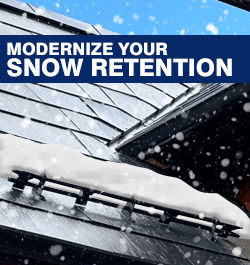
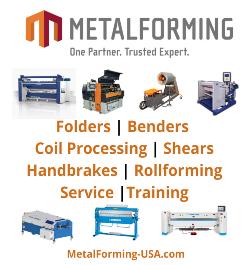


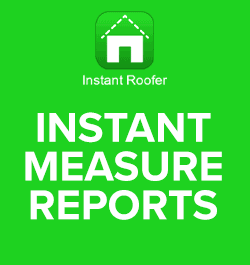

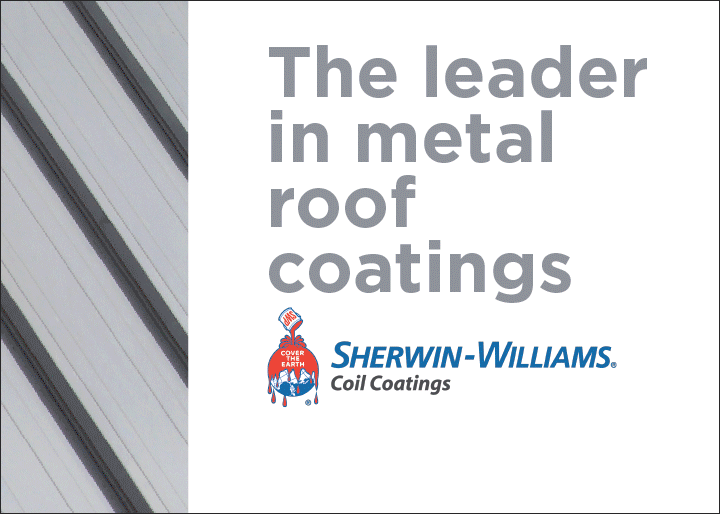
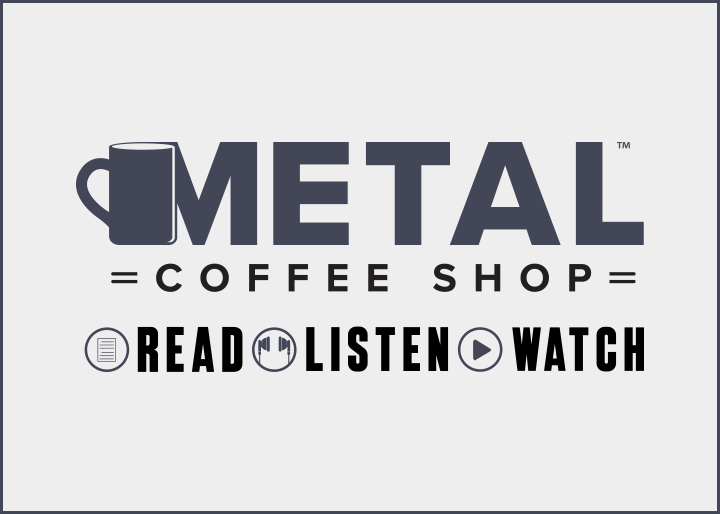


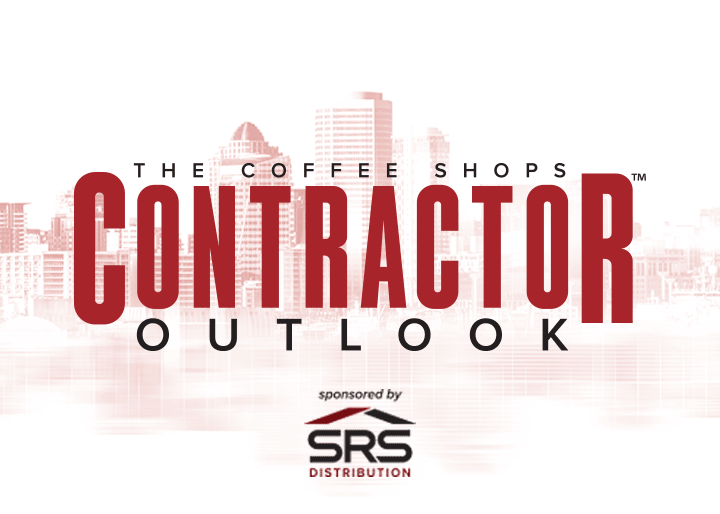
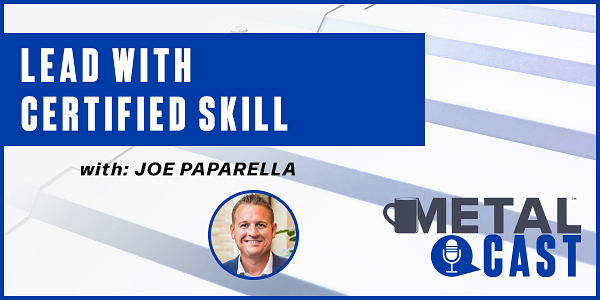

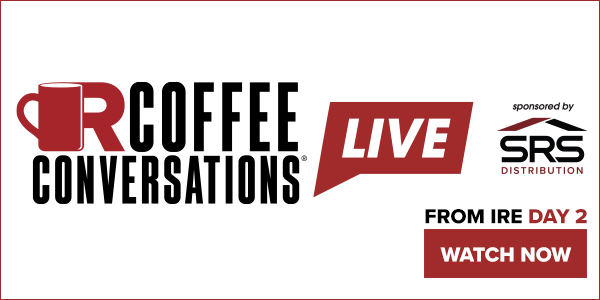
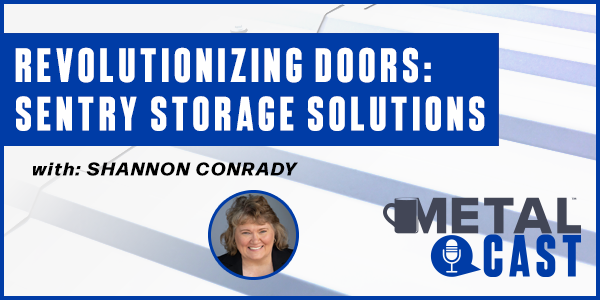


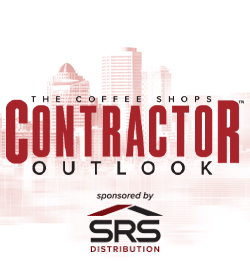

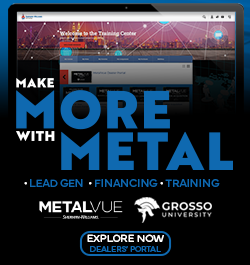
Comments
Leave a Reply
Have an account? Login to leave a comment!
Sign In